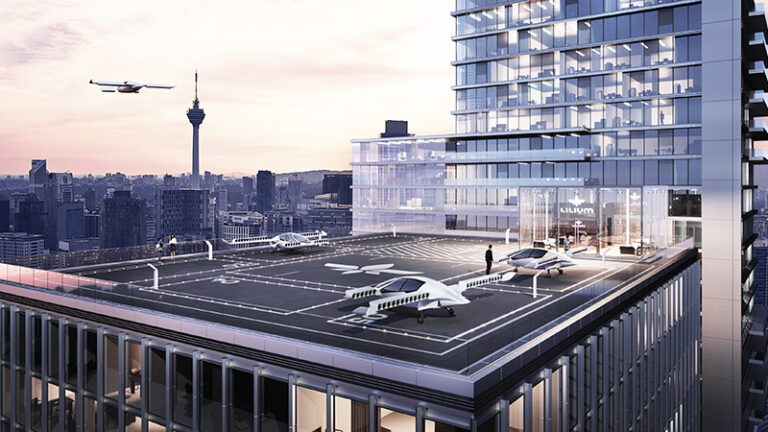Stay Up to Date
Submit your email address to receive the latest industry and Aerospace America news.
The Transformational Flight Integration and Outreach Committee explores the potential of electric propulsion and autonomy technologies on enabling new aviation missions and markets.
The global aeronautics enterprise stands at the threshold of a transformative epoch for the role of aviation in existing and new markets for commercial, business and private air mobility as well as service innovations. These opportunities are driven by emerging and converging technologies, including innovations in electric propulsion, increasing and more trusted autonomy, manufacturing, airspace management concepts, broadband aviation connectivity and software apps and services These advancements contribute to the more widespread, safe and efficient movement of people and goods throughout more origins and destinations, utilizing more airspace, in a broader spectrum of vehicle types and business models.
In April, Uber Technologies announced creation of a subsidiary, Uber Elevate, to develop urban electric vertical takeoff and landing, or eVTOL, services. The announcement came at the Uber Elevate Summit in Dallas, where Uber announced partnerships with Dubai and Dallas for urban mobility demonstrations planned for 2020. During the summit, a new venture capital fund (Levitate Capital) for urban air mobility startups was announced, representing a significant event in the aviation startup space, which has not been a traditional sector for investors.
Also in the vertical flight domain, Aurora Flight Sciences in April flew a scaled version of its eVTOL concept. Uber announced selection of the company as a partner for development of aircraft for the Uber Elevate Network. In September, Boeing announced its intent to acquire Aurora.
Turning to electric aircraft, Boeing’s Horizon X company and JetBlue announced investments in the hybrid electric-aircraft startup Zunum Aero, of Kirkland, Washington, for regional airline travel. Also in the electric area, eHang of China, Joby Aviation of California, Volocopter GmBH of Germany and dozens of others are involved in eVTOL developments for these new markets.
It was a record-setting year for electric aircraft. In March, the Extra 330LE aerobatic plane, powered by an electric propulsion system made by Siemens of Germany, set two speed records. On March 23 at the Dinslaken Schwarze Heide airfield in Germany, the piloted aircraft reached a top speed of around 340 kph over 3 kilometers. The next day, the Extra 330LE became the world’s first electric aircraft to tow a glider into the sky. The next month, the participants at the AERO Friedrichshafen conference in Friedrichshafen, Germany, witnessed the world’s first all-electric air show, including flights by aerobatic aircraft powered by Siemens.
In government developments, the FAA’s streamlining of certification processes for CFR 14, Part 23 Airworthiness standards went into effect in August. This streamlining paves the way for aircraft incorporating many of the technologies captured in NASA’s On-Demand Mobility Technology Roadmaps.
With support from the NASA New Aviation Horizons initiative, NASA is moving forward with the X-57 Maxwell experimental plane for demonstration of innovations enabled in aircraft design through integration of distributed electric propulsion and optimized aerodynamics. In July, NASA took delivery of a Tecnam P2006T fuselage, which will be equipped with modified wings and designated the X-57. The February release of the General Aviation Manufacturers Association Publication 16, a standard for electric aircraft performance, represents a first in this electric technology domain.
The vision for a new generation of urban and regional aircraft for more widely accessible mobility is rapidly evolving. While a global need for such mobility solutions is growing, a spectrum of emerging technologies is increasing the plausibility of bringing such visions to reality. Much challenging work in regulation, policy, finance, public acceptance and infrastructure needs lie ahead. All this context makes it a good time to be an innovator or an entrepreneur in aviation.
Related Posts
Stay Up to Date
Submit your email address to receive the latest industry and Aerospace America news.




